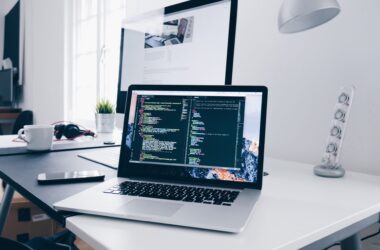In today’s digital age, innovative technologies continue to reshape the way we interact with the world around us. One such groundbreaking concept that has gained significant traction is that of digital twins. Digital twins have emerged as powerful tools that bridge the physical and digital realms, enabling organizations to optimize operations, enhance decision-making, and drive innovation. In this comprehensive review, we will delve into the intricacies of digital twins, exploring their definition, components, applications, benefits, challenges, and future potential.
Understanding the Concept of Digital Twins
At its core, a digital twin is a virtual representation or a digital replica of a physical object, process, or system. It encompasses a wide range of technologies, including Internet of Things (IoT), data analytics, artificial intelligence (AI), and simulation. Digital twins are designed to capture real-time data from their physical counterparts and simulate their behavior, enabling organizations to gain insights, conduct experiments, and make informed decisions.
There are different types of digital twins based on their applications. Physical digital twins replicate physical objects, such as machinery, buildings, or infrastructure. Process digital twins model and analyze specific processes, such as manufacturing or supply chain workflows. System digital twins encompass larger-scale systems, such as smart cities or complex industrial networks. These various types of digital twins find application across industries, including manufacturing, healthcare, smart cities, aerospace, energy, automotive, retail, and more.
How Digital Twins Work
Digital twins rely on a combination of data collection, integration, processing, and visualization technologies. Sensors and IoT devices gather real-time data from physical objects, which is then fed into the digital twin system. The collected data is processed and analyzed using advanced algorithms, including machine learning and AI, to simulate the behavior, performance, and interactions of the physical object. The results are visualized through intuitive user interfaces, providing actionable insights for decision-makers.
Benefits and Advantages of Digital Twins
Digital twins offer numerous benefits and advantages across industries. They empower organizations to make data-driven decisions, leveraging predictive analytics and simulations. By understanding the behavior of physical assets or processes in a virtual environment, organizations can optimize operations, improve efficiency, and reduce downtime and maintenance costs. Digital twins also foster innovation by enabling rapid prototyping, testing new ideas, and accelerating product development. Additionally, they enhance safety by facilitating risk mitigation and enabling proactive maintenance.
Challenges and Limitations of Digital Twins
Despite their transformative potential, digital twins come with their own set of challenges. Data privacy and security concerns arise as vast amounts of sensitive data are collected and shared. Ensuring the scalability and complexity of digital twin systems is another significant challenge. Implementation can be costly and requires careful planning and integration with existing infrastructure. Ethical implications surrounding the use of digital twins, such as data ownership and algorithmic biases, also need to be addressed to build trust and ensure fair practices.
The Future of Digital Twins
The future of digital twins looks promising, with several emerging trends and innovations on the horizon. Integration with other technologies, such as IoT, AI, and blockchain, will unlock new possibilities and further enhance the capabilities of digital twins. Industries like healthcare, agriculture, and logistics are poised to benefit greatly from advancements in digital twin technologies. As the adoption of digital twins becomes more widespread, the market is expected to grow significantly, driving innovation and creating new opportunities.

Wrapping It All Up!
Digital twins represent a transformative concept that holds immense potential for organizations across various industries. By creating virtual replicas of physical objects, processes, and systems, digital twins empower decision-makers to optimize operations, improve efficiency, and drive innovation. However, challenges related to data privacy, scalability, cost, and ethics need to be carefully addressed to harness the full benefits of digital twins. As technology continues to evolve, the future of digital twins







